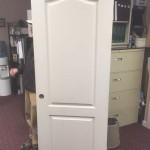How To Build An Interior Wall In An Existing Room With Carpet Floor
Building an interior wall within an existing room is a common home improvement project undertaken to redefine space, create new rooms, or improve functionality. When the existing room has a carpeted floor, the process requires special considerations to ensure a secure, level, and aesthetically pleasing finish. This article details the necessary steps and precautions for successfully constructing a wall on carpet.
Planning is paramount. Before commencing any physical work, a clear understanding of the room's dimensions, the precise location of the new wall, and any existing utilities is crucial. This stage also involves acquiring the necessary permits, if required by local building codes. Furthermore, one must consider the structural implications of adding a wall and ensure that the existing floor joists are capable of supporting the additional load.
The first step is to determine the precise location of the wall. Use a stud finder to locate ceiling joists. Mark the joist locations on the ceiling with a pencil. Then, use a plumb bob or laser level to transfer these marks to the carpeted floor below. These points will establish the line along which the top and bottom plates of the wall will be installed.
Key Point 1: Preparing the Carpet and Subfloor
The presence of carpet presents a unique set of challenges. Simply building a wall on top of carpet is not recommended due to its compressibility. The carpet will compress over time, leading to potential instability and unevenness in the wall. The carpet must be removed where the wall will be erected to expose the subfloor beneath.
The best method involves carefully cutting away the carpet using a sharp utility knife. It is imperative to cut a strip of carpet slightly wider than the width of the lumber being used for the wall's framing, typically a 2x4. A good rule of thumb is to cut a strip approximately 4-6 inches wide.
After cutting the carpet, use pliers or a carpet scraper to pull it free from the tack strip along the existing wall. Once the carpet is removed, remove the tack strip along the area where the new wall will tie into the existing wall to create a flush surface. Dispose of the removed carpet and tack strip properly.
The exposed subfloor must now be prepared. Inspect the subfloor for any signs of damage, such as rot, mold, or water stains. If damage is present, it must be repaired or replaced before proceeding. Clean the subfloor thoroughly to remove any debris, dirt, or adhesive residue. A vacuum cleaner with a brush attachment is suitable for this task. If the subfloor is uneven, self-leveling compound may be applied to create a smooth, even surface for the bottom plate.
The removal of the carpet and preparation of the subfloor is critical for ensuring a solid foundation for the new wall. Failure to properly prepare the subfloor can result in structural issues down the line.
Key Point 2: Framing the Wall
Framing is the skeleton of the wall, providing structural support and a framework for attaching drywall and other finishes. Accuracy and precision are paramount during this phase to ensure a straight, plumb, and structurally sound wall.
Begin by cutting the top and bottom plates to the exact length of the wall. The plates are typically made of 2x4 lumber. Use a level and a straight edge to ensure that the cuts are square. Place the bottom plate along the marked line on the subfloor and secure it using construction adhesive and concrete nails or screws, depending on the subfloor material. Ensure the plate is firmly attached and level. Similarly, attach the top plate to the ceiling joists above, using construction adhesive and screws long enough to penetrate the joists. Locate the marks made earlier when finding joist locations.
Next, cut the vertical studs. The height of the studs will depend on the ceiling height, minus the combined thickness of the top and bottom plates. Standard stud spacing is 16 inches on center, meaning that the distance from the center of one stud to the center of the next is 16 inches. Mark the stud locations on both the top and bottom plates. Also, include studs at the ends of the wall where it joins the existing walls and any other necessary framing for doors or windows.
Attach the studs to the top and bottom plates using nails or screws. Ensure that the studs are plumb using a level. For doorways, construct a header above the opening to support the load. The header size will depend on the width of the doorway and the load-bearing requirements.
Once the framing is complete, install any necessary wiring or plumbing before adding insulation. This is the optimal time to run electrical wires for outlets, switches, or lighting fixtures. It's also the best time to add insulation within the stud cavities to improve soundproofing and energy efficiency.
After wiring and plumbing are in place, install insulation between the studs. Faced insulation is typically used, with the paper facing the interior of the room. Secure the insulation with staples.
Key Point 3: Finishing the Wall
Finishing the wall involves covering the framing with drywall, taping and mudding the seams, and applying paint or other finishes to create a smooth, aesthetically pleasing surface.
Cut the drywall to fit the framed wall, ensuring that the seams fall on the center of the studs. Use a drywall saw or a utility knife to score and snap the drywall to the desired size. Attach the drywall to the studs using drywall screws, spaced approximately 12 inches apart. Ensure that the screws are driven deep enough to dimple the drywall surface without tearing the paper. Avoid placing screws too close to the edges of the drywall.
Once the drywall is installed, apply drywall tape to the seams and corners. Use a drywall knife to apply a thin layer of drywall mud (joint compound) over the tape. Allow the mud to dry completely, then sand it smooth. Apply additional coats of mud as needed to create a seamless surface. Feather the edges of the mud to blend them smoothly with the surrounding drywall. Sand each coat of mud after it dries.
After sanding, prime the drywall with a drywall primer. Primer helps to create a uniform surface for painting and improves the adhesion of the paint. Allow the primer to dry completely before applying the paint. Choose a paint color and finish that complements the existing room. Apply two coats of paint, allowing each coat to dry completely before applying the next.
After the paint has dried, install baseboards along the bottom of the wall, where it meets the floor. Cut the baseboards to the correct length and angle, and attach them to the wall using nails or screws. Caulk the top edge of the baseboard to seal any gaps. If desired, install crown molding along the top of the wall, where it meets the ceiling.
Finally, address the transition between the new wall and the existing carpet. Several options exist. The simplest is to reinstall the carpet, carefully trimming it to fit snugly against the baseboard. Another option is to install a transition strip that covers the gap between the carpet and the wall. Transition strips are available in various materials and finishes to match the décor of the room. A third option is to install new carpet in the new room, meeting the existing carpet at the doorway or opening. When reinstalling the carpet, a kneeless carpet stretcher can provide a tight and proper fit.
By following these steps, one can successfully build an interior wall in an existing room with a carpeted floor, creating a functional and aesthetically pleasing space.

How To Build A Wall In An Existing Home Angela Marie Made

How To Build A Wall In An Existing Home Angela Marie Made

How To Build A Wall In An Existing Home Angela Marie Made

How To Build A Wall In An Existing Home Angela Marie Made

How To Frame A Wall The Home Depot

Wall To Carpet Guide Features Benefits Types Installation And Much More

How To Frame A Wall The Home Depot

Royalhomeflooring Carpet Installation

How To Build A Wall Closet More Stuff In With Doors Diy
How To Build A Stud Wall Bunnings
Related Posts








